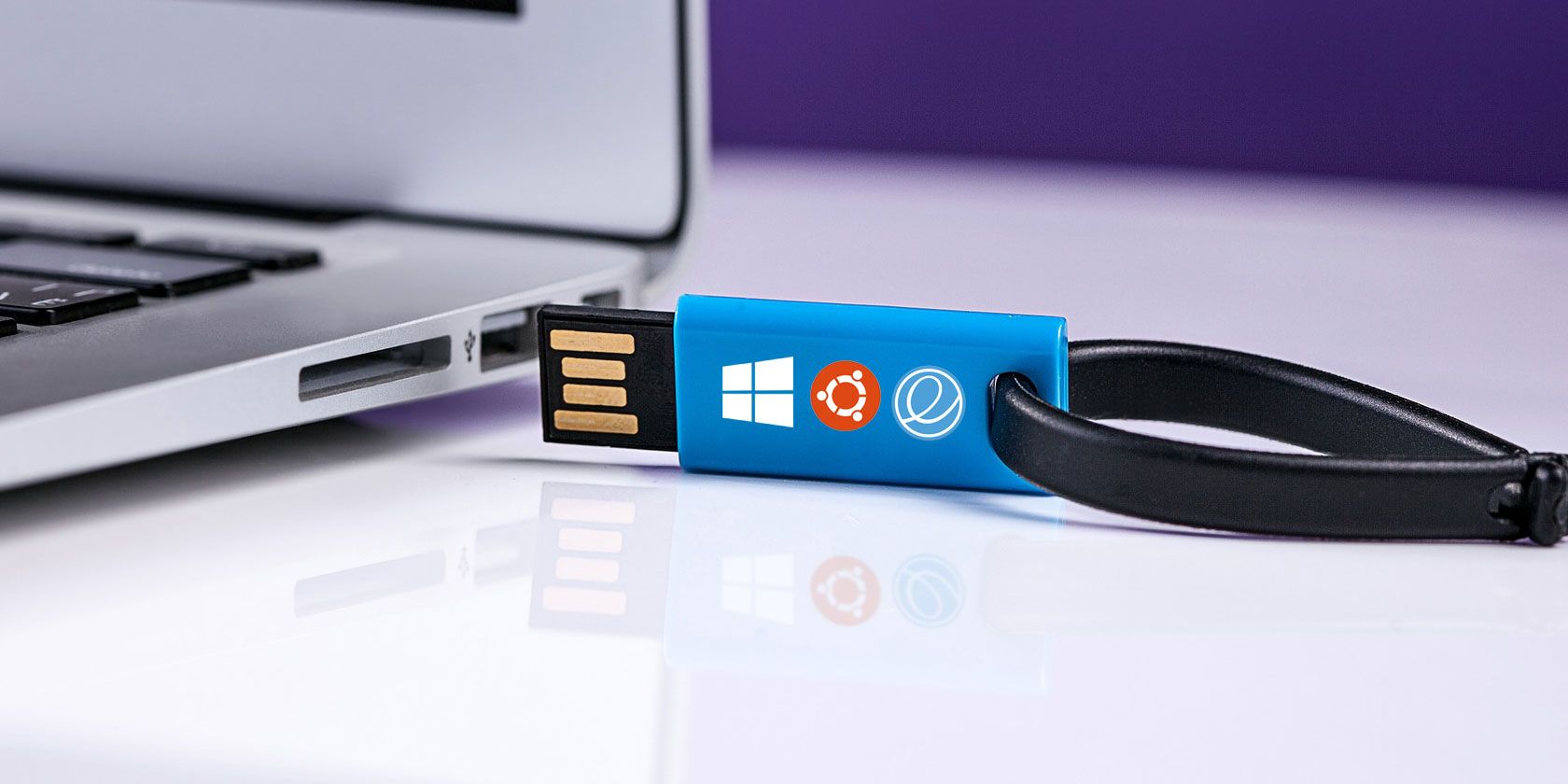
Do you want to run multiple operating systems from a single USB stick? Perhaps boot into a live environment, or even install the operating system? Learning how to boot from USB is easier than you’d think!
Multiboot USB drives can host live Linux distributions and installation media for Windows. That is small operating systems explicitly designed to provide maintenance to a computer from outside of the computer’s operating system.
In this article, we’ll look at several free Windows programs that can create dual-boot and multiboot USB media. Be sure to use a high-quality USB drive, preferably one that’s larger than 8 GB!
1. WinSetupFromUSB
WinSetupFromUSB is a highly recommended pick for installing Windows from a USB and multiboot USBs. It’s an intuitive multiboot software option. However, WinSetupFromUSB is only compatible with Windows 2000/XP and later, as well as Linux and BSD.
Using WinSetupFromUSB is easy. Open the software, and select your USB disk from the dropdown menu.

Next, check the button next to your preferred operating systems.

Then you’ll need to browse to the volume containing the operating system you wish to install on your multiboot USB. When you’re ready, click the Go button.

If you’re interested, check the option by Show Log to view detailed information on what’s going on.

Finally, when installation is complete, you’ll see a Job Done message.

Overall, WinSetupFromUSB is pretty simple to use and features a quick write time. It’s also got a QEMU mode, and it’s a small, portable app.
Download: WinSetupFromUSB (Free)
2. MultiBootUSB
MultiBootUSB is a pretty popular program for just this kind of task. The software is also a portable application, it’ll run from your USB drive, and you do not need to install it. This gives you a great deal of flexibility, should you want to change things up but you aren’t at your home or office computer.
Adding multiple bootable OS distros is easy, browse under Select image and choose your ISO. Note that while MutiBootUSB runs on Windows and Linux, you can only create Linux Live USB systems.

Once you’ve clicked chosen your image, select your desired amount of persistence if you want to be able to save files on the partition, and click Install distro.

A great feature of MultiBootUSB is the addition of QEMU virtualization software, which allows you to test both individual Linux ISOs and your USB stick without restarting the computer.

For a simple way to put multiple Linux distributions on a USB stick, MultiBootUSB is a great lightweight option.
Download: MultiBootUSB (Free)
3. XBoot
XBoot has a lot more documentation than MultiBootUSB, but both programs don’t require a lot of instruction to use. XBoot provides a similar experience and is also portable media making it handy to use on the move.
Installation of XBoot is pretty straightforward. Double-click the executable file, and it opens in seconds. From there it’s quite simple to add your ISOs – drag and drop them into the main box.

Next, click on the Create USB button. The program will prompt you to select the USB drive that you wish to install the ISOs on and to select the kind of bootloader that you want to use. If your USB stick is formatted to FAT32, XBoot recommends Syslinux. If the USB stick is formatted to NTFS, Grub4DOS is recommended. You could also select Do not install any Bootloader, but since you want the USB stick to be bootable, you’ll probably ignore that.
Click OK and we’re on the way!


Xboot also has the same QEMU features, where you can boot a live CD ISO or boot the USB that you just made.

Despite being a slightly more substantial program, XBoot works a little faster than MultiBootUSB. Another nice touch is the ability to download ISO files directly via the XBoot downloader.
Download: Xboot (Free)
4. YUMI: Your Universal Multiboot Installer
YUMI is a well-respected tool, which is not as feature rich as others in this list but a solid choice for creating multiple booting USB drives.
YUMI has a slightly different workflow. You choose which distro you want from the list, before browsing to the ISO on your hard drive, or following the provided link to the home page of your chosen distro.

Select your distro, in this case Lubuntu, and locate the ISO on your hard drive.

When you are ready, click Create. It’ll take a few minutes. Then you can repeat the process to add further OS images to your drive.
Additionally, YUMI doesn’t have the QEMU tools of MultiBootUSB or XBoot. What it does have, is the support of countless network administrators and tech workers who use it in their daily work lives!
Download: YUMI (Free)
One USB for All Your Operating Systems
To use the USB drives you create, it’s worth knowing how to change the boot order on your PC so you can choose which one to boot from each time.
Multi OS USB sticks might be overkill for many users, and you might be better off with a simple bootable Windows USB stick.
Read the full article: How to Install Multiple Bootable Operating Systems on a USB Stick
Read Full Article
No comments:
Post a Comment